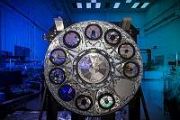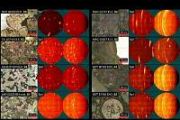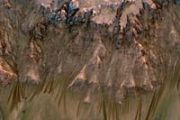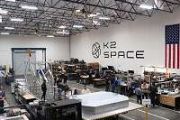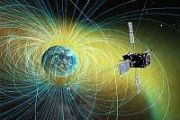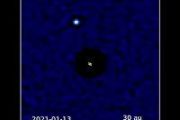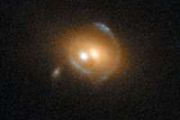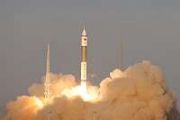
Copernical Team
Fugro's remote space operations complex to be located in Perth, Australia
 Fugro confirms the Australian Space Automation, Artificial Intelligence and Robotics Control Complex (SpAARC) will be located in the heart of downtown Perth's central business district (CBD). Housed in Western Australia's (WA's) largest telecommunications exchange, and thanks to an ongoing partnership with Telstra, Fugro's world-class facility will manage robotics and remote operations in Austra
Fugro confirms the Australian Space Automation, Artificial Intelligence and Robotics Control Complex (SpAARC) will be located in the heart of downtown Perth's central business district (CBD). Housed in Western Australia's (WA's) largest telecommunications exchange, and thanks to an ongoing partnership with Telstra, Fugro's world-class facility will manage robotics and remote operations in Austra Kacific goes all-in on AWS to scale up delivery of its broadband internet
 Kacific Broadband Satellites has announced that it is going all-in on Amazon Web Services (AWS) to scale up the delivery of its broadband internet for the rural regions of Southeast Asia and the Pacific. Kacific plans to migrate its IT infrastructure and critical business applications to AWS by 2022.
AWS has enabled Kacific to reduce time-to-market and to enhance network management by appr
Kacific Broadband Satellites has announced that it is going all-in on Amazon Web Services (AWS) to scale up the delivery of its broadband internet for the rural regions of Southeast Asia and the Pacific. Kacific plans to migrate its IT infrastructure and critical business applications to AWS by 2022.
AWS has enabled Kacific to reduce time-to-market and to enhance network management by appr SPAINSAT NG program successfully passes Critical Design Review
 The SPAINSAT NG programme has successfully passed another important milestone, the critical design review (CDR) of the payload and the complete satellite, including the CDR elements of the Pacis 3 partnership project with the European Space Agency (ESA). The review was declared successful after verifying the good progress of the tests performed on the development models of the X-band payload.
The SPAINSAT NG programme has successfully passed another important milestone, the critical design review (CDR) of the payload and the complete satellite, including the CDR elements of the Pacis 3 partnership project with the European Space Agency (ESA). The review was declared successful after verifying the good progress of the tests performed on the development models of the X-band payload. Research into ageing set to blast into space
 Scientists at the University of Liverpool, funded by the UK Space Agency, are using space to understand what happens to human muscles as we age, and why.?
When astronauts spend time in space, without the effects of gravity, their muscles get weaker, just as they do in older age, before recovering when they return to Earth. By studying what happens to muscle tissue in space, the team can co
Scientists at the University of Liverpool, funded by the UK Space Agency, are using space to understand what happens to human muscles as we age, and why.?
When astronauts spend time in space, without the effects of gravity, their muscles get weaker, just as they do in older age, before recovering when they return to Earth. By studying what happens to muscle tissue in space, the team can co Dragon delivery - European science destined for space
 The next SpaceX resupply vehicle is packed with European science, ready for delivery to the International Space Station just in time for Christmas.
The Dragon spacecraft is scheduled to launch from NASA's Kennedy Space Center in Florida, USA, at 11:06 CET (10:06 GMT) Tuesday 21 December. But before it does, we take a quick peek at some of the European cargo it carries.
b>Safe air br
The next SpaceX resupply vehicle is packed with European science, ready for delivery to the International Space Station just in time for Christmas.
The Dragon spacecraft is scheduled to launch from NASA's Kennedy Space Center in Florida, USA, at 11:06 CET (10:06 GMT) Tuesday 21 December. But before it does, we take a quick peek at some of the European cargo it carries.
b>Safe air br A gigantic lane made of raw material for new stars
 A group of astronomers, led by researchers from the Max Planck Institute for Astronomy (MPIA), have identified one of the longest known structures in the Milky Way. It stretches some 3900 light-years and consists almost entirely of atomic hydrogen gas. This filament, called "Maggie", could represent a link in the matter cycle of the stars. Analysing the measurements suggests that the atomic gas
A group of astronomers, led by researchers from the Max Planck Institute for Astronomy (MPIA), have identified one of the longest known structures in the Milky Way. It stretches some 3900 light-years and consists almost entirely of atomic hydrogen gas. This filament, called "Maggie", could represent a link in the matter cycle of the stars. Analysing the measurements suggests that the atomic gas Could acid-neutralizing life-forms make habitable pockets in Venus' clouds?
 It's hard to imagine a more inhospitable world than our closest planetary neighbor. With an atmosphere thick with carbon dioxide, and a surface hot enough to melt lead, Venus is a scorched and suffocating wasteland where life as we know it could not survive. The planet's clouds are similarly hostile, blanketing the planet in droplets of sulfuric acid caustic enough to burn a hole through human s
It's hard to imagine a more inhospitable world than our closest planetary neighbor. With an atmosphere thick with carbon dioxide, and a surface hot enough to melt lead, Venus is a scorched and suffocating wasteland where life as we know it could not survive. The planet's clouds are similarly hostile, blanketing the planet in droplets of sulfuric acid caustic enough to burn a hole through human s 'Cyborg' artist who 'hears' colour turns to time travel
 For Neil Harbisson, a self-described "cyborg" artist living near Barcelona, colour is quite literally music to his ears thanks to an antenna he designed to overcome colour blindness.
Well-known in Spain and with an international following that enabled him to meet the likes of Leonardo di Caprio and Tom Cruise, Harbisson is now testing out a new device designed to feel physically the passing
For Neil Harbisson, a self-described "cyborg" artist living near Barcelona, colour is quite literally music to his ears thanks to an antenna he designed to overcome colour blindness.
Well-known in Spain and with an international following that enabled him to meet the likes of Leonardo di Caprio and Tom Cruise, Harbisson is now testing out a new device designed to feel physically the passing Looking Back, Looking Forward To New Horizons
 New Horizons remains healthy and continues to send valuable data from deep in the Kuiper Belt - more than 5 billion miles away - even as it speeds farther and farther from the Earth and Sun.
As 2021 winds down, I want to recount what the New Horizons project has accomplished this year, and also look ahead to tell you about our plans for 2022.
During a busy and productive 2021, our sc
New Horizons remains healthy and continues to send valuable data from deep in the Kuiper Belt - more than 5 billion miles away - even as it speeds farther and farther from the Earth and Sun.
As 2021 winds down, I want to recount what the New Horizons project has accomplished this year, and also look ahead to tell you about our plans for 2022.
During a busy and productive 2021, our sc Comets' heads can be green, but never their tails
 Every so often, the Kuiper Belt and Oort Cloud throw galactic snowballs made up of ice, dust and rocks our way: 4.6-billion-year-old leftovers from the formation of the solar system.
These snowballs - or as we know them, comets - go through a colourful metamorphosis as they cross the sky, with many comets' heads turning a radiant green colour that gets brighter as they approach the Sun.
Every so often, the Kuiper Belt and Oort Cloud throw galactic snowballs made up of ice, dust and rocks our way: 4.6-billion-year-old leftovers from the formation of the solar system.
These snowballs - or as we know them, comets - go through a colourful metamorphosis as they cross the sky, with many comets' heads turning a radiant green colour that gets brighter as they approach the Sun. 
















